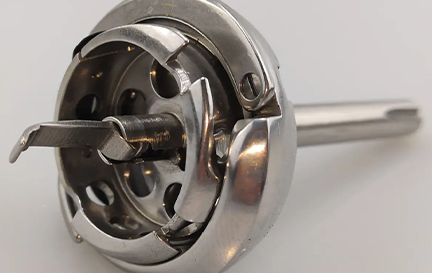single needle lock stitch
The Single Needle Lock Stitch A Key Element in Textile Design
The single needle lock stitch is a foundational technique in the world of textile apparel, emphasizing efficiency, durability, and precision. A critical component of many sewing machines, this stitch type is characterized by its formation, where a single needle penetrates the fabric and interlocks two threads – the needle thread and the bobbin thread. This remarkable innovation has not only transformed the garment industry but has also significantly influenced various sectors such as upholstery, leather goods, and even industrial applications.
Historical Context
The evolution of the sewing machine has played a crucial role in the development of the single needle lock stitch. In the mid-19th century, the introduction of mechanized sewing machines revolutionized fabric assembly, making mass production of clothing and textiles possible. Early machines, such as those developed by Isaac Merritt Singer, utilized the lock stitch mechanism, which quickly gained popularity due to its reliability and ease of use. The single needle lock stitch became the standard in garment construction, praised for its ability to produce neat top and bottom stitches, a key indicator of quality craftsmanship.
Technical Aspects
The single needle lock stitch is created using a straightforward mechanism. The needle, equipped with a hook, moves up and down through the fabric, pulling the upper thread (needle thread) down into the bobbin case. Simultaneously, the bobbin thread intertwines with the needle thread, forming a secure stitch. This simple yet effective process ensures that the fabrics are bound together with a consistent and even tension, resulting in strong seams that resist unraveling.
One of the defining characteristics of the single needle lock stitch is its versatility
. It can be used on a wide variety of fabric types, including lightweight materials like cotton or delicate silks, as well as heavier textiles like denim and canvas. This adaptability makes it a favorite among tailors and seamstresses alike.Advantages of the Single Needle Lock Stitch
single needle lock stitch

One of the primary advantages of the single needle lock stitch is its strength. The interlocking nature of the stitch offers excellent resistance to stress and strain, making it ideal for seams that undergo frequent movement, such as those found in skirts, trousers, and shirts. Additionally, the stitch lays flat on the fabric, which not only enhances the garment's aesthetic appeal but also minimizes bulk, making garments more comfortable to wear.
Another significant benefit is the ease of repair. If a lock stitch seam becomes damaged, it is relatively simple to rip the stitches and re-sew the fabric, ensuring longevity in garment life. This characteristic is especially important in sustainable fashion, where the emphasis on repairable and reusable clothing is growing.
Applications Beyond Apparel
While the single needle lock stitch is predominantly recognized in the garment industry, its applications extend far beyond clothing. This stitch is also utilized in upholstery, crafting durable seams in furniture and automotive materials. The reliability of lock stitches ensures that these items can withstand considerable wear and tear, making it a staple in both residential and commercial settings.
Furthermore, in the creation of technical textiles used in sectors such as aerospace and medical, the single needle lock stitch maintains structural integrity. Here, the precision of the stitch contributes to the performance of textiles under various conditions, whether moisture-wicking fabrics for athletic wear or breathable materials in medical applications.
Conclusion
In conclusion, the single needle lock stitch serves as a vital mechanism in the world of textiles, with its historical emergence and technical benefits marking it as an essential technique. From its sturdy construction to its adaptability across various materials and sectors, it underscores the importance of quality in fabric assembly. As the textile industry continues to evolve, the single needle lock stitch remains a cornerstone of both classic tailoring and contemporary design, proving that some techniques stand the test of time, continuously shaping the way we approach fabric construction.
-
Boost Production Efficiency with a Pattern Sewing MachineNewsAug.29,2025
-
Industrial Excellence with the Best Heavy Duty Sewing MachineNewsAug.29,2025
-
Precision and Power with the Best Pattern Sewing MachineNewsAug.29,2025
-
Reliable Bulk Packaging Starts With the Right FIBC Sewing MachineNewsAug.29,2025
-
Advanced Packaging Solutions: Elevate Productivity with Jumbo Bag Sewing Machine and Industrial Stitching EquipmentNewsAug.29,2025
-
High-Performance Solutions for Bulk Packaging: FIBC Sewing Machine and MoreNewsAug.29,2025
-
Maximize Efficiency with an Industrial Cylinder Arm Sewing MachineNewsAug.28,2025


























